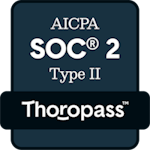AR is an outstanding training tool; by design AR is immersive, and its features address common challenges faced through all areas of training.
When it comes to AR, both end-users and experience designers have benefitted from rolling out small tests, or pilots, to identify the best way to leverage AR within existing learning programs. Allowing for a soft introduction to this technology leads to identifying best practices for individual companies, as one size does not always fit all.
AR improves the performance of information, so when planning and designing for AR, the content and learning objectives come first. When you’re ready to get started, it’s important to plan and prepare for it like any other learning modality.
Follow These 3 Steps to Ensure the Best Results
1. Strategize & Plan
Identifying the pilot use case along with measurements of success or KPIs is the difficult part, but it is vital to the success of your pilot. The more you have planned prior to starting, the better!
2. Design, Build, & Launch
With questions asked and answered, an experience flow developed, and the content produced, build the AR experiences in a no-code platform and launch!
3. Analyze, Optimize, & Scale
Utilize this information to optimize existing augmented experiences, and design for the future. With analytics in hand, scaling is easy because it is backed by data with your content and your audience, not just the market.
6 Critically Chosen Vital Practices Imperative to AR Pilot Success
- Clearly define your goals and success criteria prior to launch
- Content and learning objectives encourage and drive AR use
- Thoughtfully leverage a mix of multimedia content types
- Find an AR partner or software that meets your needs
- Pilot the use case, analyze your results, and scale
- Be a champion of AR to build internal excitement
[contact-form-7 id=”7157″ title=”Download-How-to-get-started-with-ar”]



